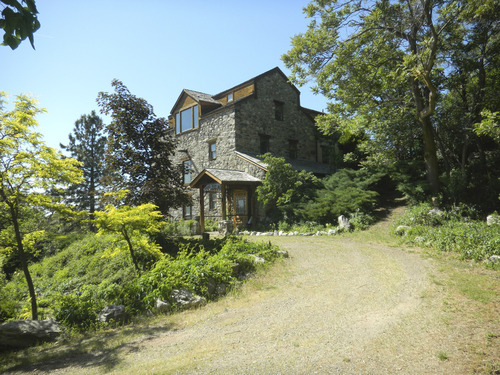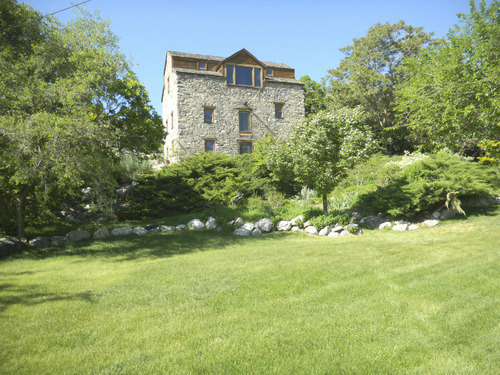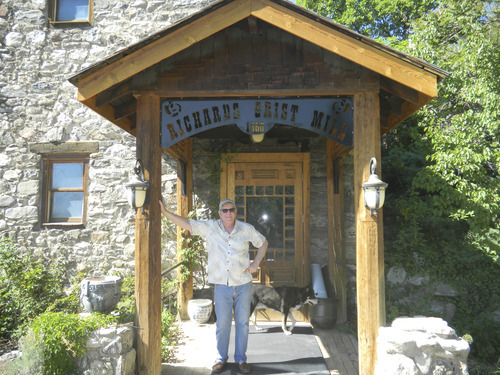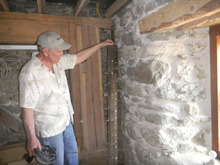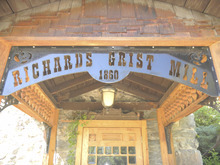This is an archived article that was published on sltrib.com in 2012, and information in the article may be outdated. It is provided only for personal research purposes and may not be reprinted.
Farmington • For those of us who remember the elegant Heidelberg Restaurant in the late 1960s, it is impossible to drive into this idyllic Davis County town without wondering what became of what was one of the finest establishments of its time.
So, when I recently met Farmington mayor Scott Harbertson, I immediately asked him what had become of the old restaurant. He graciously put me in touch with Tom Owens, the building's current owner.
The story of the old mill proved far more interesting than the simple tale of the demise of a popular restaurant.
Owens once worked as the producer of the old "Death Valley Days" television series in Los Angeles. That experience turned the Ogden native into a Mormon history buff.
"The more I read, the more I found that Mormon history had its tentacles spread through the entire West," he said.
In the 1980s, he moved to Salt Lake City's American Towers. As he explored his new neighborhood, he discovered Sam Weller's bookstore and, more important, Weller's private den filled with rare Mormon history books.
Owens then noticed a story in The Salt Lake Tribune that the old Heidelberg restaurant property was going to be auctioned off by the State of Utah. Since he was already looking at investment lands in Farmington, he decided to go take a look.
"I found the place, and it was in shambles," Owens said. "It was scary because it was so vandalized and overgrown. It was not inviting at all, but I was intrigued by the history. I could see through the overgrown jungle and demolished stuff an image that this place had possibilities."
So, fortified with a few belts of scotch, he went to the auction. Owens said it quickly became obvious that the Heidelberg property and its seven acres was the real prize. Owens eventually bought the old rock building after a spirited auction. He moved his advertising agency to the old 1960s-era reception center and began the brutal work of restoring the mill.
Owens said the property was first owned by Willard Richards, the first historian of the Mormon church who was in the cell with church prophet Joseph Smith when he was assassinated in Carthage, Ill., in 1844. After a sawmill up Farmington Canyon began to wear out, Richards hired Frederick Kessler, an architect who designed 29 significant mills in Utah including the Chase Mill at Liberty Park, to construct a new one. But Richards died at a young age in 1854 and his nephew, Franklin D. Richards, took over the estate.
Kessler's mill was finished in 1860. The huge rock structure used diverted water from Farmington Creek and, though its 24-foot overshot wheel was the height of technology at the time, the industrial revolution soon made it obsolete.
The mill and building would serve many uses. It became Farmington's first electrical generator with power used for Utah governor Simon Bamberger's railroad. Orchard owners used the cool mill to store their fruit. It also was an ice storage house. Several families lived in the building from 1926 to 1960. That's when Salt Lake restaurant owners Garth Naylor and Terry Gross purchased it and turned it into the Heidelberg.
The restaurant proved to be a huge success. Naylor and Gross decided to move to San Francisco and contracted with another chef to take over the business. But the new manager ran the facility into the ground, laid off the best employees and quit paying taxes. Naylor and Gross tried to restore it, but the business did not come back. The state took over ownership from a failed savings and loan. During that time, it was heavily vandalized and almost destroyed by fire.
Owens bought it in 1992 and has spent several hundred thousand dollars and hours of his own time restoring it.
He worries about its future.
"I never had any intent to tear it down," he said. "I wanted to preserve the old mill as the historical relic it is. But there is nothing in the law today to stop me from tearing it down. It is pretty shameful that society doesn't protect heritage buildings."
He said the ultimate goal is to find someone who will preserve the old building. Perhaps the city, LDS Church or Davis County might use it as a museum. Or it could be used as a retreat for a corporation, an upscale estate or a corporate headquarters.
Owens is certain of one thing.
"This is the most historical building in a town filled with historical buildings," he said. "It is the most important historical building in Davis County and arguably the most significant LDS historical building in private hands anywhere."
Twitter: @tribtomwharton



